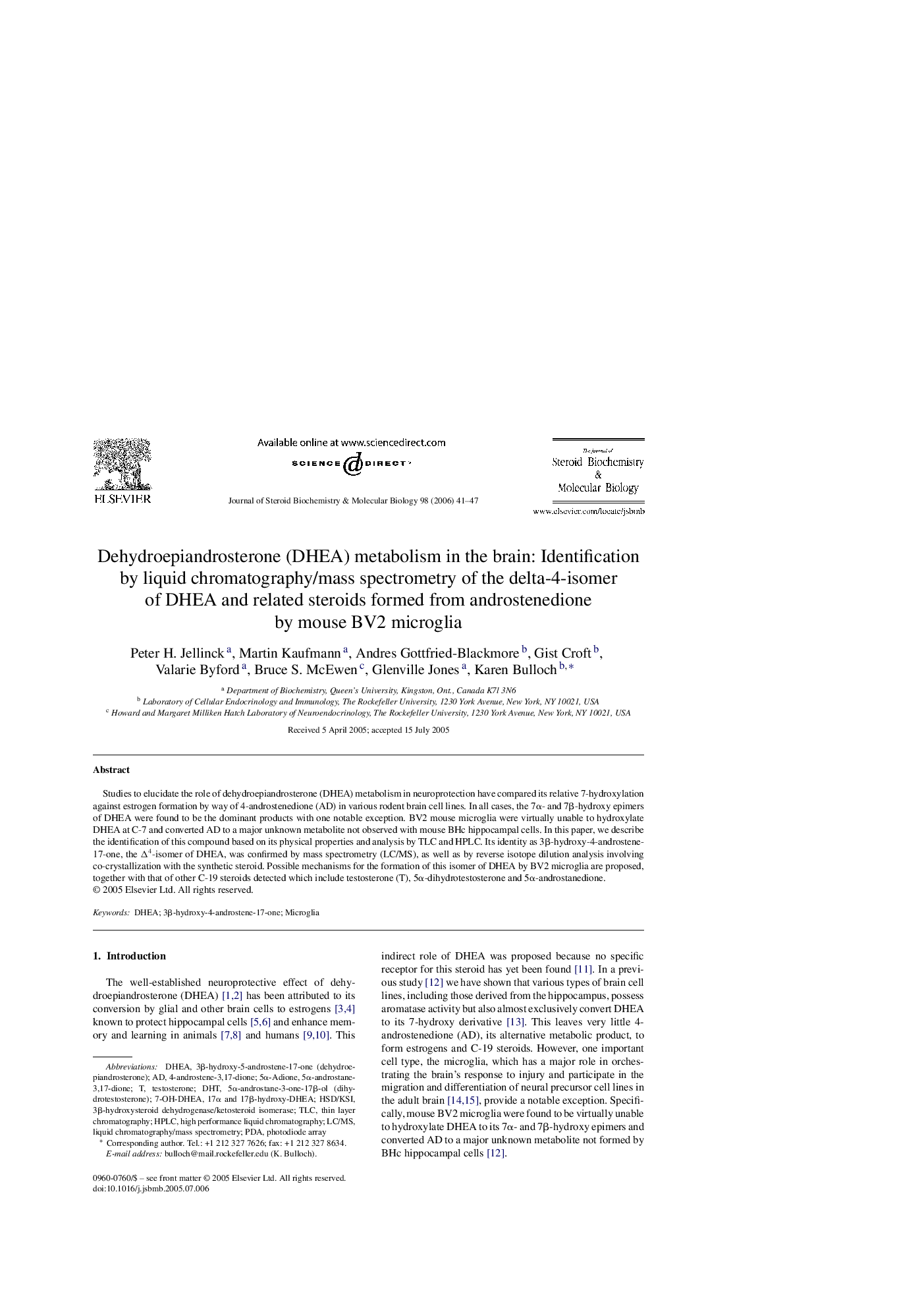| Article ID | Journal | Published Year | Pages | File Type |
|---|---|---|---|---|
| 1992886 | The Journal of Steroid Biochemistry and Molecular Biology | 2006 | 7 Pages |
Studies to elucidate the role of dehydroepiandrosterone (DHEA) metabolism in neuroprotection have compared its relative 7-hydroxylation against estrogen formation by way of 4-androstenedione (AD) in various rodent brain cell lines. In all cases, the 7α- and 7β-hydroxy epimers of DHEA were found to be the dominant products with one notable exception. BV2 mouse microglia were virtually unable to hydroxylate DHEA at C-7 and converted AD to a major unknown metabolite not observed with mouse BHc hippocampal cells. In this paper, we describe the identification of this compound based on its physical properties and analysis by TLC and HPLC. Its identity as 3β-hydroxy-4-androstene-17-one, the Δ4-isomer of DHEA, was confirmed by mass spectrometry (LC/MS), as well as by reverse isotope dilution analysis involving co-crystallization with the synthetic steroid. Possible mechanisms for the formation of this isomer of DHEA by BV2 microglia are proposed, together with that of other C-19 steroids detected which include testosterone (T), 5α-dihydrotestosterone and 5α-androstanedione.
